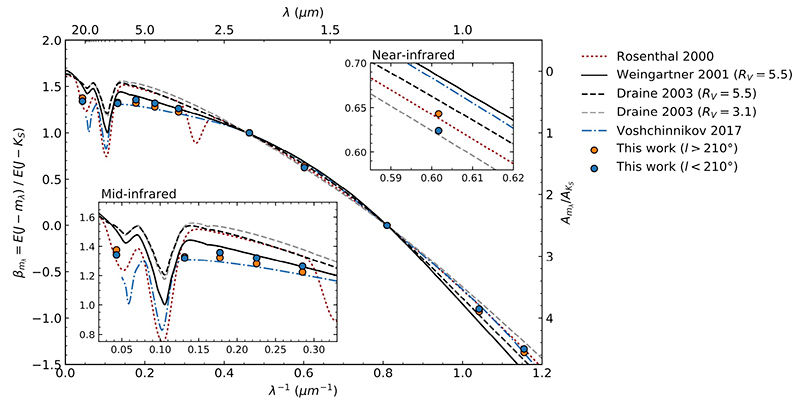
|
EPoS |
|
EPoS Contribution
|
|
Infrared Extinction in Orion A
Stefan Meingast UNIVIE, Vienna, AT | |
| We investigate the shape of the extinction curve in the infrared up to 25 μm for the Orion A star-forming complex. We obtain color excess ratios for eight infrared passbands by fitting a series of color-color diagrams. The fits are performed using Markov chain Monte Carlo methods, together with a linear model under a Bayesian formalism. The resulting color excess ratios are directly interpreted as a measure of the extinction law. We show that the Orion A molecular cloud is characterized by flat mid-infrared extinction, similar to many other recently studied sightlines. Moreover, we find statistically significant evidence that the extinction law from 1 μm to at least 6 μm varies across the cloud. In particular, we find a gradient along galactic longitude, where regions near the Orion Nebula Cluster show a different extinction law compared to L1641 and L1647, the low-mass star-forming sites in the cloud complex. These variations are of the order of only 3% and are most likely caused by the influence of the massive stars on their surrounding medium. While the observed general trends in our measurements are in agreement with model predictions, both well-established and new dust grain models are not able to fully reproduce our infrared extinction curve. In conclusion, we argue that specific characteristics of the infrared extinction law are still not well understood, but Orion A can serve as an unbiased template for future studies. Thus, Orion A, as the archetype of star-forming complexes par excellence, once again serves as first direct evidence of a variable extinction law, and hence changing dust properties, within a single star-forming molecular cloud complex. | |
 | |
| Caption: The infrared extinction law towards Orion A | |
| Collaborators: J. Alves, UNIVIE, AT M. Lombardi, UNIMI, IT |
Suggested Session:
Molecular clouds |